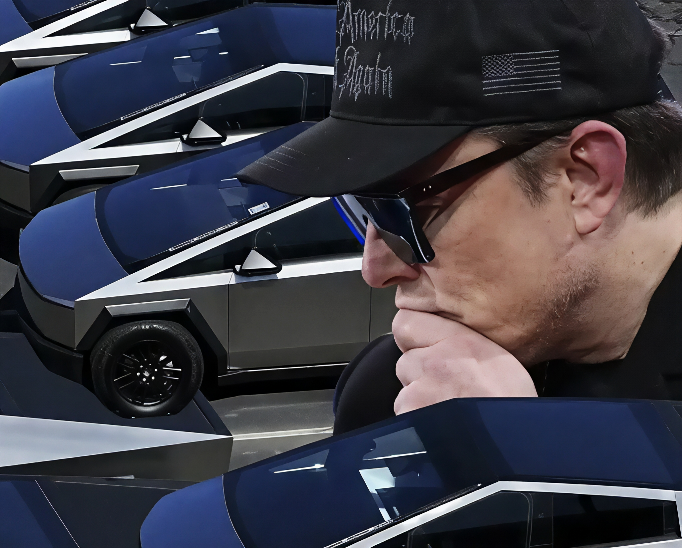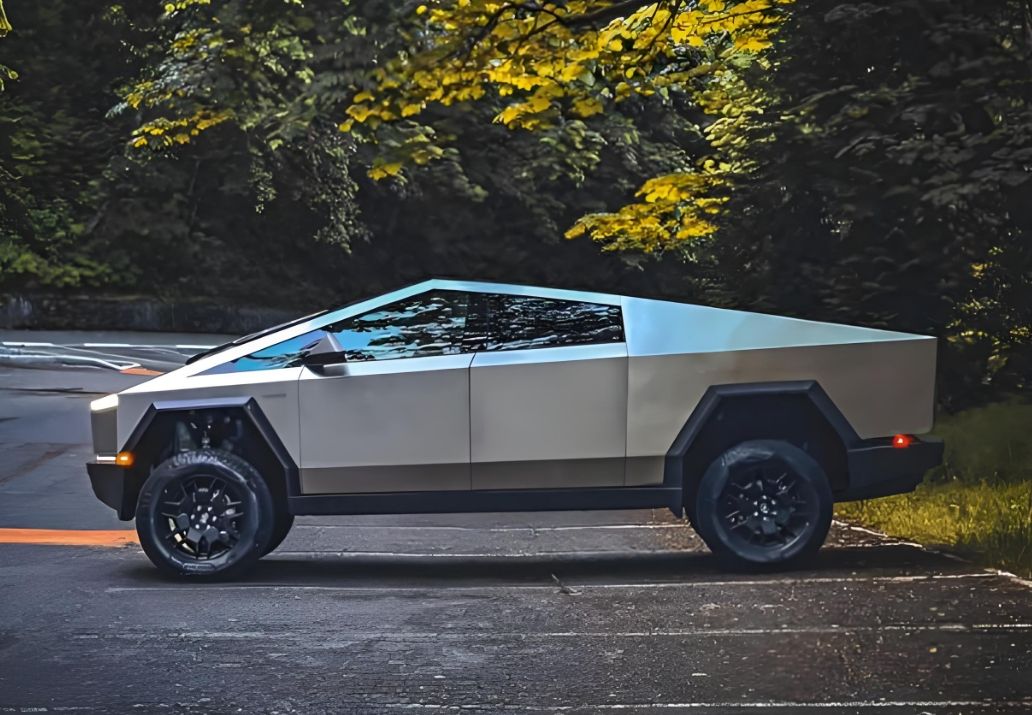
When Elon Musk smashed the Cybertruck window with a metal ball,the world took note of the impact resistance of the stainless-steel body.However,few people realize that this 3mm-thick cold-rolled 30X stainless steel has sparked a technological revolution in the field of large metal part machining.This article will reveal the mystery of how ultra-hard stainless steel is transformed from sheets to the body structure.
Cold Forging Process:The Ultimate Challenge for Metal
Traditional automotive steel plates typically have a yield strength of 200-300 MPa,while the 30X stainless steel used in the Cybertruck reaches an astonishing 1200 MPa—close to the level of an armored vehicle.These material properties bring three major machining challenges:
• Increased Springback Effect:The springback during bending can reach up to 35°,three times that of ordinary steel plates.Initial tests at the Fremont factory in California showed that a 90°bend actually rebounded to 125°,requiring five compensation adjustments to meet the standard.
• Doubled Mold Wear:The hardness of HRC 52 reduces mold life by 80%.Tesla engineers revealed that after processing 1000 doors,a 0.3mm indentation appeared on the mold surface,necessitating the weekly remanufacture of core inserts using a CNC five-axis machine.
• Risk of Stress Concentration:During a roof beam stamping experiment,the propagation speed of microcracks at the edges reached 15μm per second,forcing the team to develop a stepped progressive forming process.
Industrial data shows that processing such ultra-hard stainless steel requires a press of over 8000 tons(ordinary automotive steel plates only need 2500 tons),with energy costs increasing by 400%.
Dual Technological Breakthroughs in Precision Forming
To address the above challenges,engineers have integrated traditional forging with digital technology:
• Thermoforming Synergistic Control
• Localized Induction Heating:Precisely heating a 10mm band on both sides of the bending line to 650°C,temporarily reducing the yield strength by 40%.
• Liquid Nitrogen Synchronous Cooling:Injecting-196°C cooling medium within 0.8 seconds after deformation to lock the lattice structure.
• Real-time Deformation Compensation:A laser rangefinder scans 2000 times per second,with data fed back to the CNC machining system for dynamic adjustment of pressure parameters.
• Digital Twin Pre-rehearsal
• Tesla's virtual machining system can predict deformations at the 0.01mm level:material flow simulation→stress cloud analysis→mold surface optimization→CNC machining validation.
• In the case of a door inner panel,this technology reduced the number of trial moldings from 17 to 3,saving six weeks in the development cycle.

Smart Transportation of Large Components
The monocoque body of the Cybertruck,measuring 5.88 meters in length,poses unique challenges for the transportation of metal parts:
• Vibration Damping Design:Custom polyurethane-spring composite brackets to control transportation vibrations within 0.5g.
• Deformation Monitoring System:Strain gauges are attached to key points on the body to monitor micro-strain values(real test data during transportation from Texas to Florida shows that the maximum strain in bumpy high-speed sections is only 12με).
• Non-contact Support Solution:Magnetic levitation fixtures are used to avoid local pressure deformation caused by traditional straps.
• Industry Comparison:Traditional body transportation allows for 2mm deformation,while Cybertruck,due to material rigidity requirements,compresses the tolerance to 0.25mm.
Technological Spillover Effects
This extreme machining experience is driving technological progress in the field of large metal part machining:
• Energy Sector:The flatness accuracy of wind turbine tower flanges has been improved to 0.05mm/m.
• Construction Machinery:The welding deformation of excavator booms has been reduced by 42%.
• Aerospace:The wall thickness deviation of rocket fuel tanks is controlled within±0.12mm.
• Case Study:A mining equipment manufacturer,inspired by the thermoforming control technology,reduced the load deformation of 100-ton hydraulic supports by 28%.
Manufacturing Philosophy of Material Evolution
The processing of the Cybertruck body reveals an essential truth:when material performance breaks through a critical point,the manufacturing paradigm must be restructured:
• Traditional empirical formulas fail→reliance on physics-based digital simulation.
• Single-process optimization→precise energy control throughout the entire process.
• Tolerance for subsequent correction→proactive compensation for deformation.
As a Tesla production manager said,"We are not machining steel plates;we are training the metal to change its memory."This philosophy of transforming extreme material properties into design advantages is reshaping the future landscape of large metal part machining.
Technical Notes:
• The processing of 30X stainless steel must meet the ASTM A967 passivation standard,with a surface roughness of Ra≤0.8μm after electropolishing.
• The transportation protection plan has passed the ISTA 6-FEDEX B test certification.